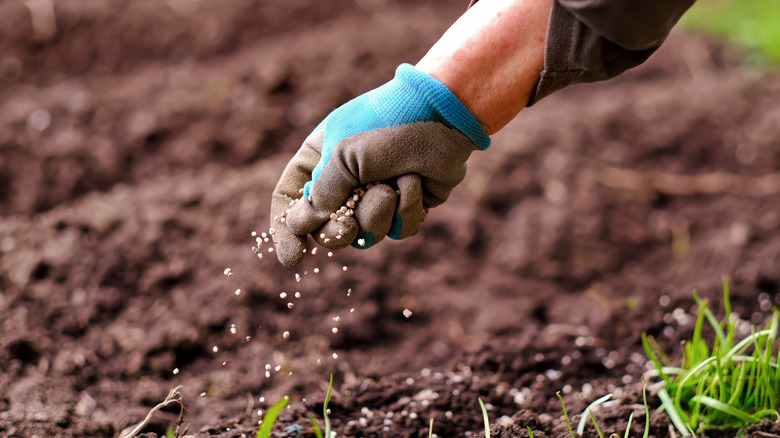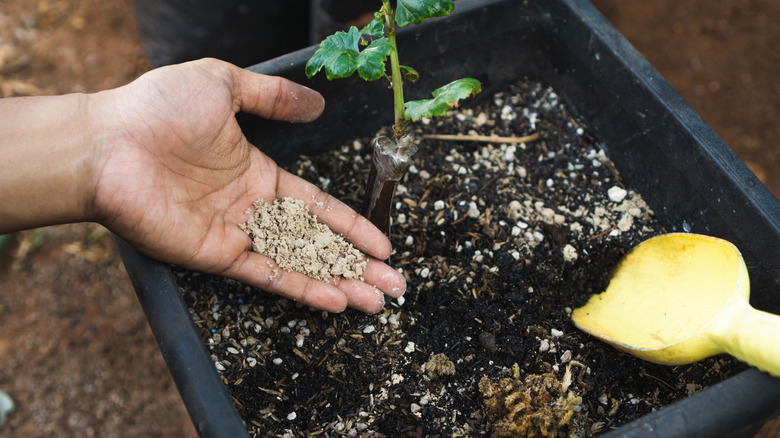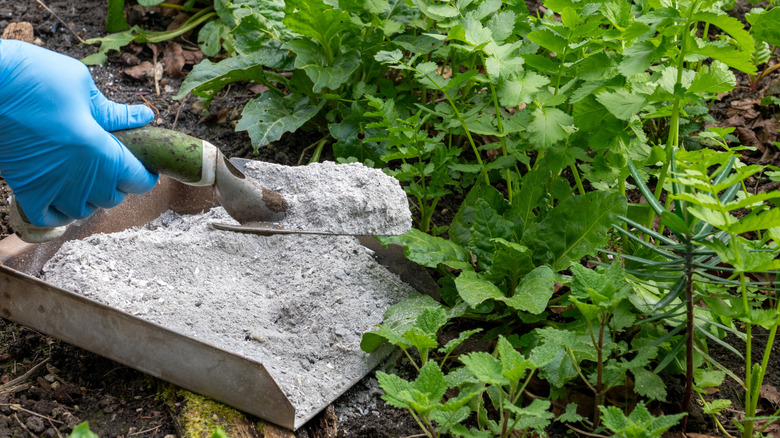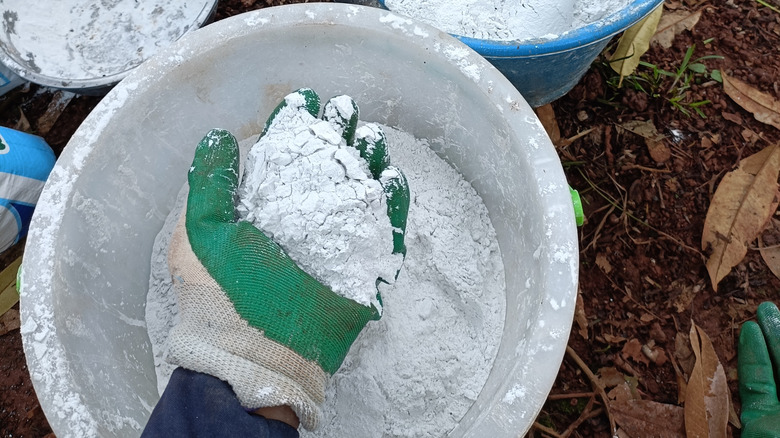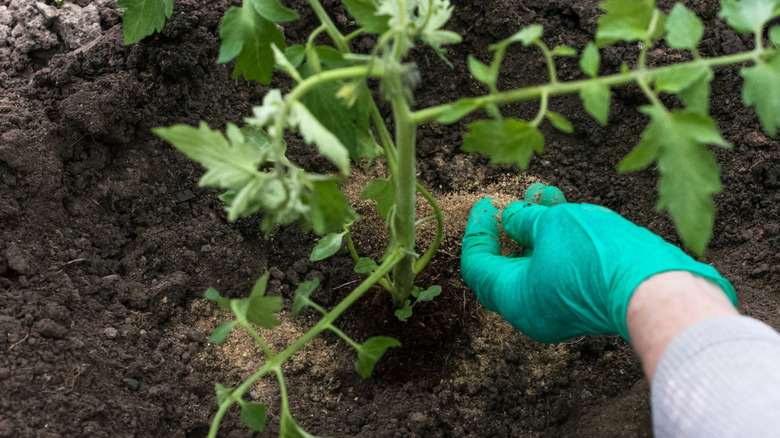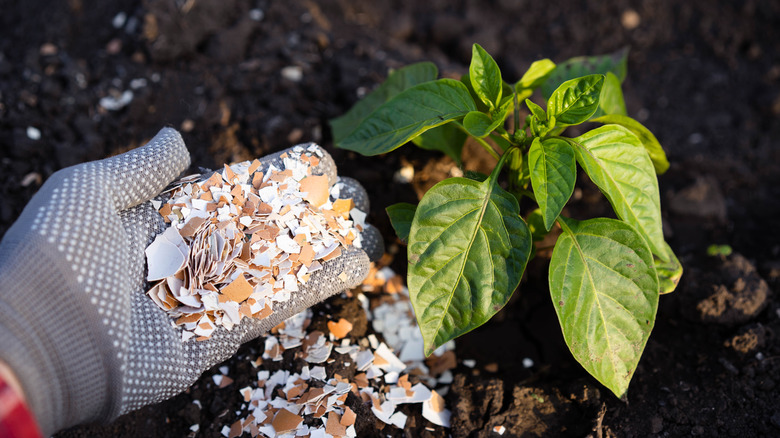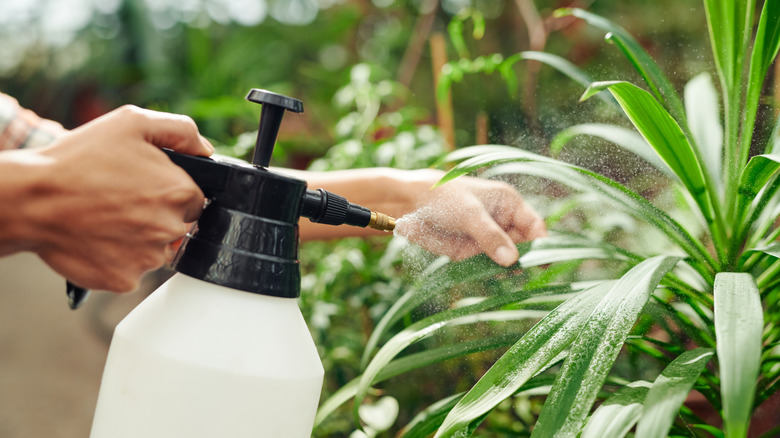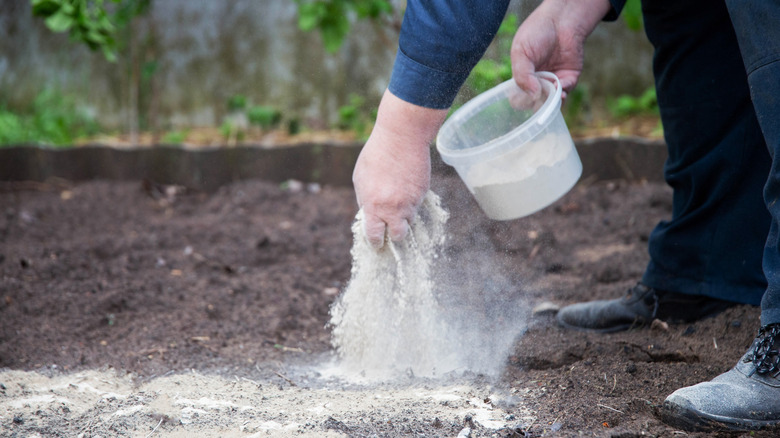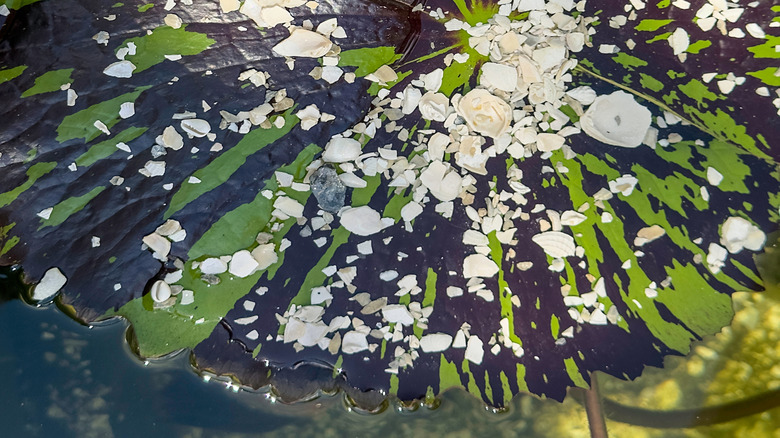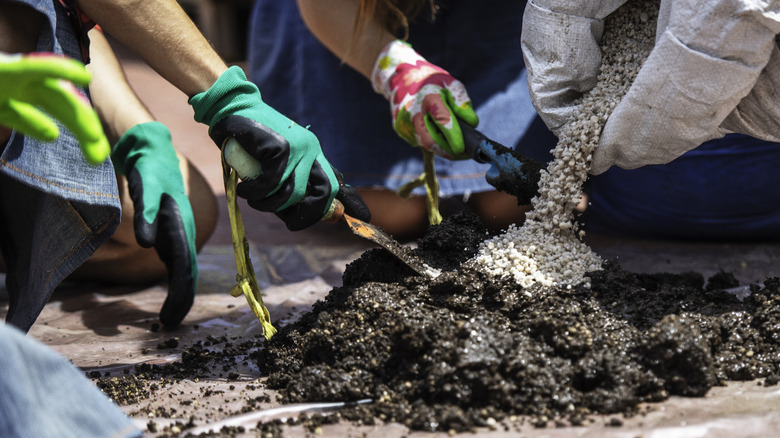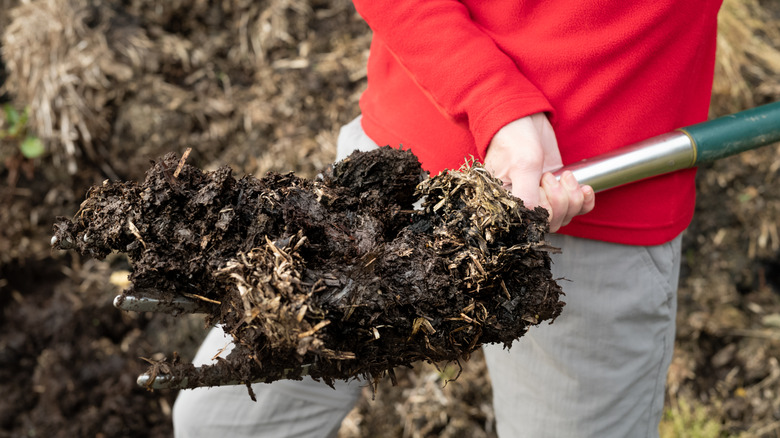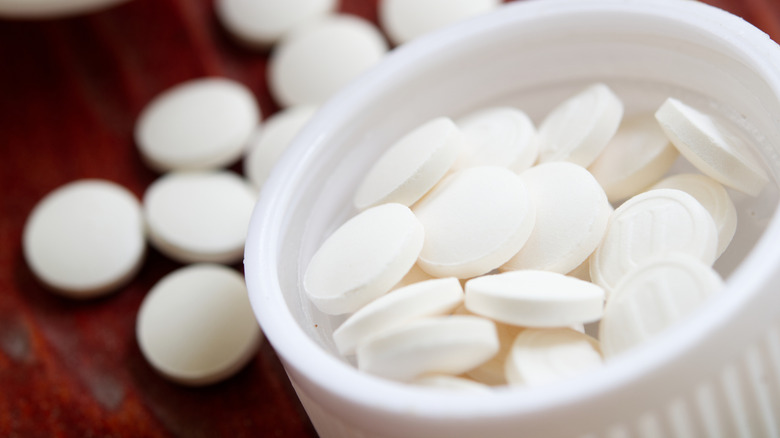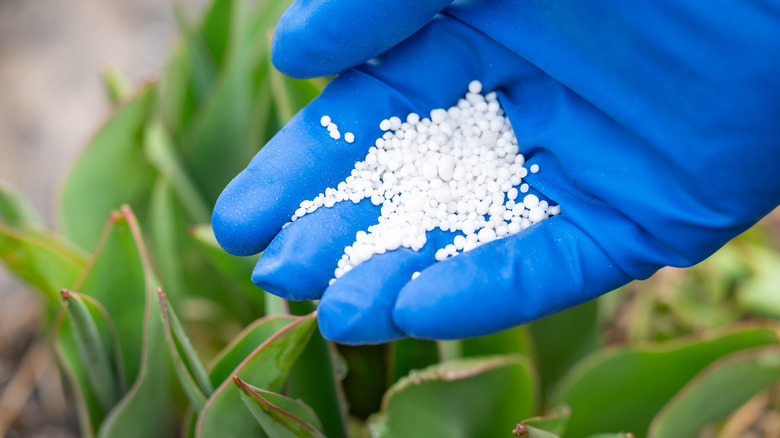12 Easy Ways To Add Calcium To Your Soil For Strong & Thriving Plants
Calcium is indispensable for plants. It is essential for enhancing plant vigor and maintaining the structural integrity of the plant. In addition, calcium plays a crucial role in supporting healthy root and leaf growth. So, it seems pretty obvious that if plants don't get enough calcium, they will suffer. Calcium-deficient plants often show stunted growth and have distorted, cupped leaves. The roots of the plants, too. They even become more vulnerable to bacterial and fungal infections. However, don't worry, there are ways to identify and treat nutrient deficiencies in plants, including calcium.
Some easy ways to add calcium to your soil for strong and thriving plants include adding crushed eggshells from kitchen scraps, mixing limestone into the soil, or working in leftover wood ash to boost calcium levels naturally. However, be careful as adding too much calcium to your garden soil can also be harmful. It can interfere with the uptake of potassium (K), magnesium (Mg), phosphorus (P), and several other macro and micronutrients. Therefore, perform a soil test and then apply the appropriate amounts of any calcium-enhancing soil amendments based on the results.
Agricultural lime
Agricultural lime, or ag lime, is basically just crushed limestone. Chemically speaking, it is primarily calcium carbonate and can be a perfect calcium booster if your soil also needs a fix of low pH levels. What's great about using agricultural lime is the fact that it releases the calcium slowly into the soil. This decreases the chance of nutrient leaching, which is a critical issue with more soluble fertilizers. Also, perform a soil test before adding lime, and never use hydrated lime in your garden. It is very unsafe and can even cause chemical burns.
Wood Ash
Wood ash can be another great source of calcium for your garden. Depending on the source, the content of calcium in wood ash can be anywhere from 20% to 50%. It also contains small amounts of phosphorus and potassium. Just make sure it comes from untreated sources. For instance, wood ash from painted wood can contain heavy metals and other materials that can be toxic to plants. Similarly, wood ash can raise the soil pH; therefore, if the pH of your garden is already too high, it may not be a feasible choice.
Gypsum
Gypsum can also be used as a soil amendment to boost calcium in the soil, especially in saline-sodic soils, where it helps displace sodium. It is chemically calcium sulfate and contains approximately 22% calcium and 18% sulfur. Sulfur is also essential for plants as it helps plants synthesize proteins, enzymes, and vitamins. The best time to add it to the soil is during the fall, so the soil can gradually absorb it before the next growing season. To apply gypsum, broadcast it evenly over the soil and water it in.
Bone meal
Bone meal is another great source of calcium for garden soil, especially if it is also lacking in phosphorus. It is made by grinding dried animal bones into a fine powder. For application, you can put about 5 to 10 pounds of bone meal per 100 square feet of garden soil. Otherwise, just add 1 to 2 tablespoons of bone meal directly into each hole when planting bulbs or transplants. However, make sure that you work it thoroughly into the soil, as its scent can attract skunks, raccoons, and dogs that may dig up your garden.
Crushed Eggshells
Eggshells are something nearly every household has at hand. So, instead of throwing them away, turn them into a natural calcium source for your rose garden. Eggshells from most commercial layers have about 2.2 grams of calcium in the form of calcium carbonate. In addition, they also contain small amounts of potassium and magnesium, both of which are also essential for plants. The issue, though, is that eggshells decompose quite slowly. So, crush or blend them into a fine powder first to speed things up. This makes it easier for the soil to absorb calcium and pass it on to your plants.
Foliar calcium sprays
Sometimes, your plants may need a quick calcium boost, and that is where foliar sprays can help. They supply nutrients directly and are often used during periods of rapid growth when plants need a quick calcium boost. Keep in mind, though, that this is not a long-term fix. The calcium through foliar sprays only reaches the plant parts you spray, and its benefits fade after a few days. To make your own calcium foliar spray at home just add some eggshells to a gallon of water, boil, let it cool, filter, and spray it directly onto your plants.
Dolomitic lime
Dolomitic limestone is a great way to amend your garden soil if it needs more than just calcium. It is chemically calcium-magnesium carbonate and adds magnesium to the soil in addition to calcium. Just keep in mind that it usually costs more than standard limestone. It also works a little slower than standard lime, but it is excellent for trees. To apply dolomite to your garden, choose a dry day and sprinkle evenly over the soil. Because it works slowly, apply dolomitic limestone well ahead of planting by about 2 to 3 months.
Crushed shells
You can also use oyster or other seashells to fix the calcium deficiency in your garden and help your plants grow and thrive. Natural seashells are over 95% calcium carbonate, and if you live in a coastal area and love taking walks on the beach, it could be a perfect choice. However, just like eggshells, they decompose very slowly. Therefore, you would need to crush them as well into a fine powder before adding them to your garden soil. In addition to adding calcium, crushed shells can also be used as mulch and can even help deter pests.
Soft rock phosphate
Soft rock phosphate is a slow-release mineral fertilizer that is mined from ancient marine deposits. It contains about 20% calcium, 8 to 10% phosphorus, and trace amounts of other plant nutrients. There are a few ways to use it in your garden. You can work it into your soil or blend it into your compost. If, however, you want a quick boost of calcium, brew it into a solution and spray it over the root zone or over the leaves. Be careful not to overapply, though. Too much of it can slow down growth or even kill plants.
Composted animal manure
If you know how to make your own DIY compost, adding animal manure to it can also help increase the calcium levels in your garden soil. Feedlot or composted cattle manure contains about 1 to 4% calcium carbonate. Poultry manure is even richer with about 4.5 to 8% calcium. Manure, in general, provides almost all 14 soil-derived plant mineral nutrients, along with organic matter. However, avoid adding fresh manure to your garden soil as it might contain harmful bacteria as well as high levels of ammonium, soluble nitrogen, and other salts.
Antacid Tablets
Another easy way to add calcium to garden soil is to use those antacid tablets that you have had lying around in your cupboard for years. The calcium carbonate content of antacid tablets, calculated from their main ingredients, typically ranges from about 35% to 53% by weight. Some gardeners also use antacid tablets to stop blossom-end rot. However, since these tablets are pretty small, you would need to use a lot of them in order to boost calcium levels for just a single plant.
Calcium Nitrate Fertilizer
Calcium nitrate is a white granular fertilizer containing 15.5% nitrogen and 26.5% calcium oxide. It is quite soluble in water and is easily absorbed by the plants from the soil. For most vegetables, fruits, and other garden plants, you can apply about 1 1/2 pounds of fertilizer per 100 square feet of soil. However, be careful not to overapply it. Using too much calcium nitrate fertilizer can disrupt the nutrient balance of the soil and could even cause severe harm to plant growth and yield.
